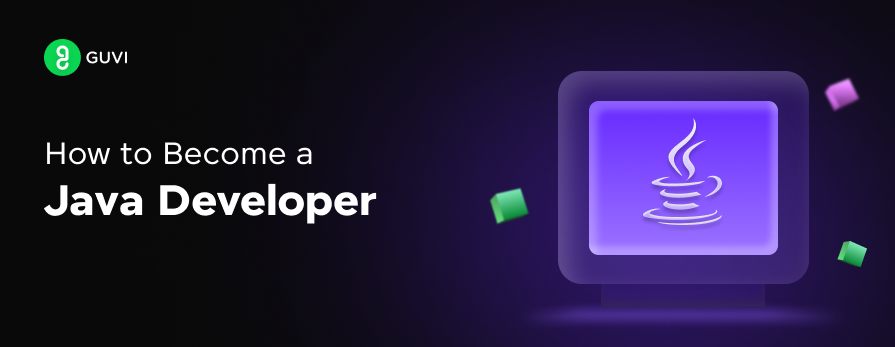
How to Become a Java Developer in 2025: A Detailed Roadmap
Mar 31, 2025 6 Min Read 30202 Views
(Last Updated)
Is becoming a Java developer your dream? But, not sure how to start? No worries, we’ve got you covered.
In this blog, you will get a detailed overview of how you can start pursuing your dream of becoming a Java Developer. Whether you are a beginner or a professional who is eager to learn Java, this is the best blog for you. Starting with their roles and responsibilities, setting up the development environment and the steps that you can follow to learn the necessary skills. Everything will be covered in the same blog. So, let’s get started!
Table of contents
- What is Java?
- Roles and Responsibilities of a Java Developer
- Steps To Become a Java Developer
- Setting Up Development Environment
- Basics of Java
- Core Java Concepts
- Advanced Concepts
- Database Implementation
- Java Frameworks
- Restful APIs and Microservices
- Testing
- Version Control and Automation
- DevOps
- Hands-on Projects
- Conclusion
- FAQs
- Is Java developer still in demand?
- Which Java framework should I learn?
- Which language will replace Java in the future?
- Will Java developers still be in demand in 2030?
- What is Java full stack?
What is Java?
Java is a widely used, high-level, object-oriented programming language initially developed by James Gosling at Sun Microsystems, which is now part of Oracle Corporation. Unlike other programming languages, it is based on the principle of “Write Once and Run Anywhere”.
This means that Java applications are written once and can be executed anywhere or platform(since it is platform independent) that has a Java Virtual Machine(JVM) installed. Java offers a large collection of libraries and frameworks that are used for a wide range of applications, from mobile apps to enterprise applications.
Roles and Responsibilities of a Java Developer
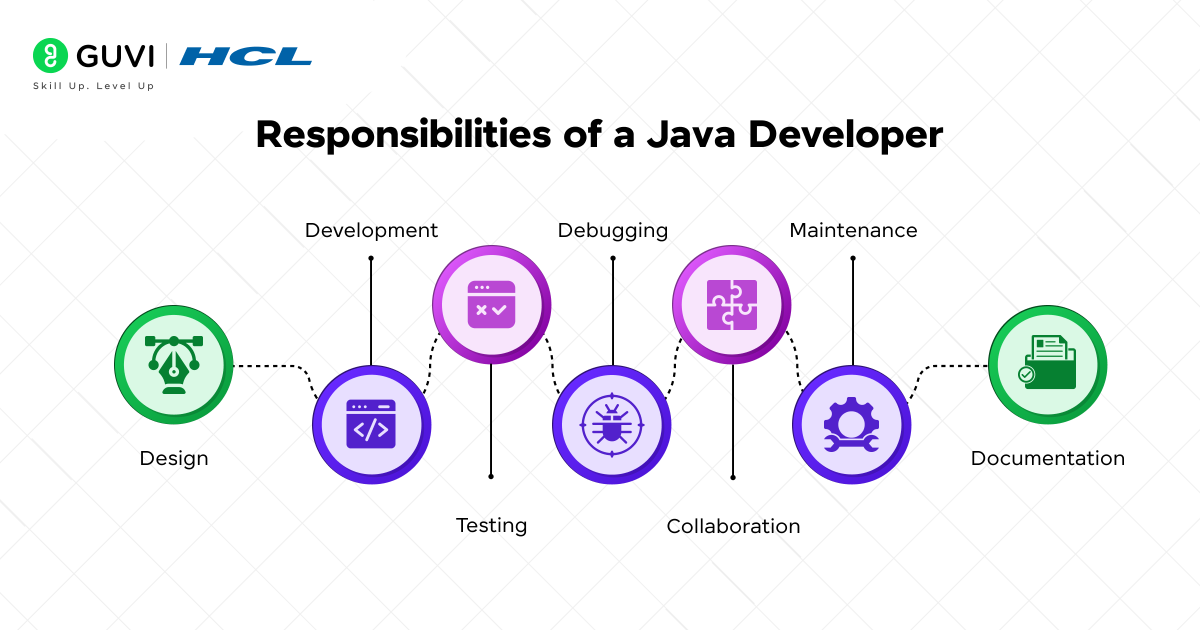
A Java Developer can also be considered a full-stack developer when they possess expertise in both front-end and back-end development that focuses on Java technologies. The roles and responsibilities of a Java developer include the following:
- Design: A Java developer is responsible for analysing project requirements and translating them into a design. It involves understanding user requirements, technical specifications, business requirements and optimal system architecture.
- Development: The main responsibility of the developer is to write code for both front-end and back-end to meet the specifications, business and user requirements. They use various frameworks such as Spring, Hibernate to build robust server-side components.
- Testing: Testing is a crucial part of a project that a developer must do in order to maintain the quality and reliability of software. They use frameworks such as JUnit or TestNG for implementing testing in Java.
- Debugging: A developer should not write code that breaks under certain conditions, the code should be reliable and work under every condition. To ensure this, a developer should debug their code frequently. It is a skill to avoid bugs in future releases.
- Collaboration: Every developer should not possess technical expertise but should have non-technical skills such as writing, collaborating to maintain a team spirit and working with others for a smoother process.
- Maintenance: The software development will not end once it is deployed, it is the developer’s responsibility to maintain the software to keep on updating to the latest trends, users’ expectations and error-free in order to perform well.
- Documentation: The last responsibility is to write documentation. Writing clear and consistent documentation for others to understand is crucial. A developer must know how to document their work so that it will be easy for others to understand his/her work.
Now, we have seen the Java developer’s responsibility. Let’s dive deeper into the steps to become one.
Steps To Become a Java Developer
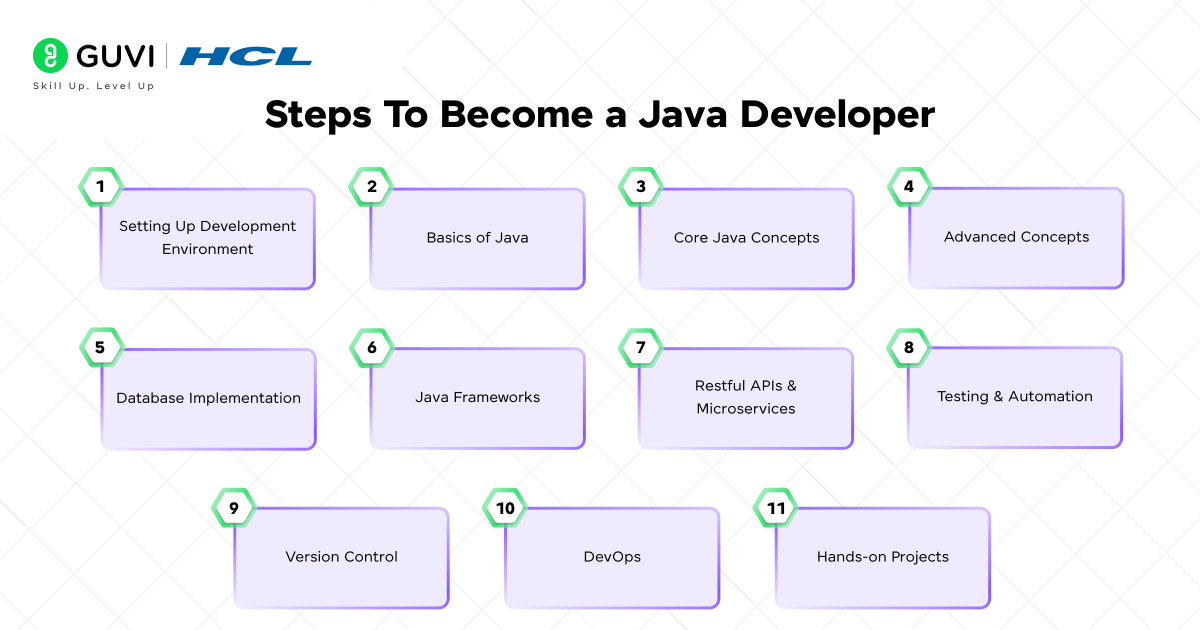
These are the 11 steps you can follow to achieve your goal of becoming a Java Developer. These steps are crucial and some steps are mandatory to keep in your study list.
Setting Up Development Environment
Before starting to develop relevant skills for a Java developer, you need to set up your system. Even though Java is a platform-independent language, it needs Java Virtual Machine(JVM) and Java Development Kit(JDK) to process the code and execute it. Make sure to download JVM and JDK on your machine(If possible, download the latest version).
Once you have downloaded it, make sure to add the location of the JVM and JDK to the “Path” variable in the environment variables. By default, it will be added once you have installed the JVM and JDK. If not, kindly add it before starting with the next steps.
There are various Integrated Development Environments (IDEs) for writing Java applications. You can choose any of them and start to proceed with it. Some of the popular Java IDEs are Eclipse, IntelliJ IDEA and VSCode. You can simply download them from the links mentioned. Let’s start learning the necessary skills in the next section.
Basics of Java
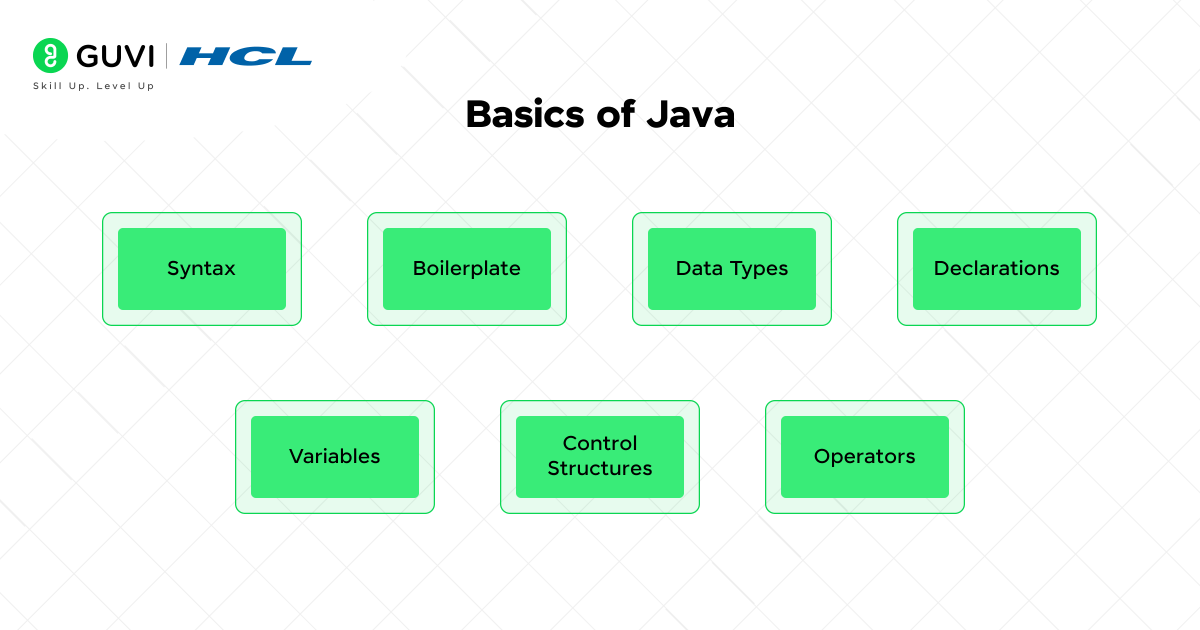
As a beginner in Java, you should start with the basic concepts. It is because, unlike other programming languages, Java is different. It has a specific structure and it will take time for a beginner to learn the structure, why it is being used and what will happen if it is not used.
So, start with fundamental concepts like syntax, boilerplate, data types, declarations, variables, control structures and operators. These are the basic concepts for every language. You must know how to implement them in Java before jumping into the next section.
Core Java Concepts
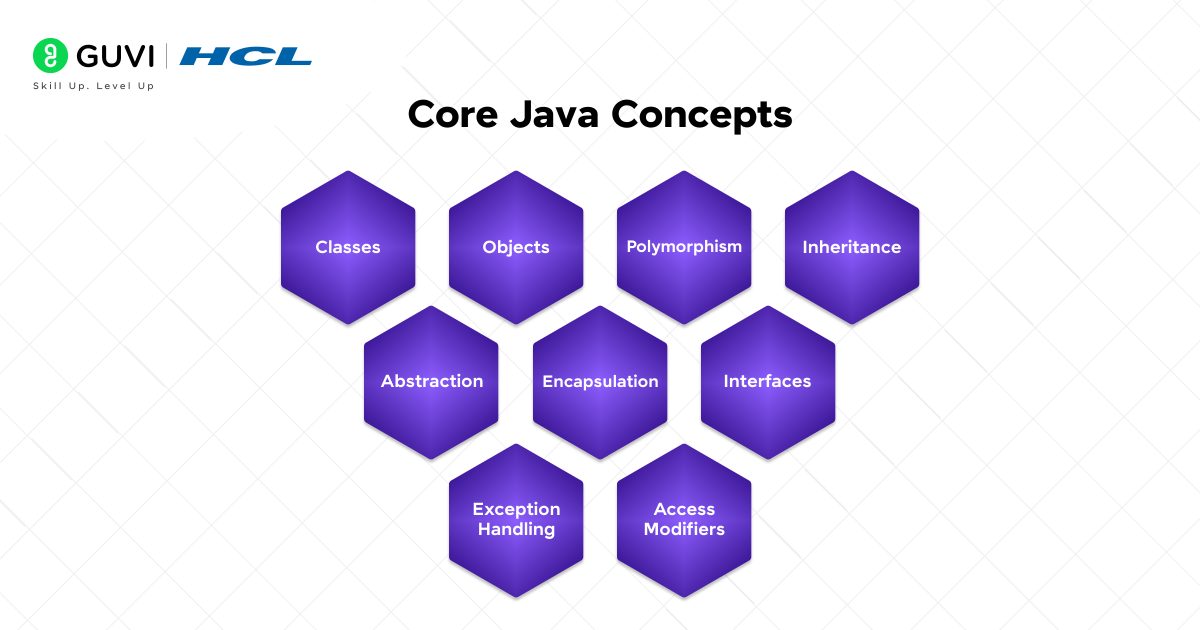
In this section, you will master the core concepts of Java. These are the high-level implementations. You might find it difficult to grasp at the start, but over time it will become handy.
Java core concepts include Object Oriented Programming(OOP) such as classes, objects, polymorphism, inheritance, abstraction, encapsulation and interfaces. It also includes exception handling(input/output exception) and access modifiers (public, private, protected, static and final). These things might differ from other programming languages such as C, C++ and python but are crucial in Java.
Advanced Concepts
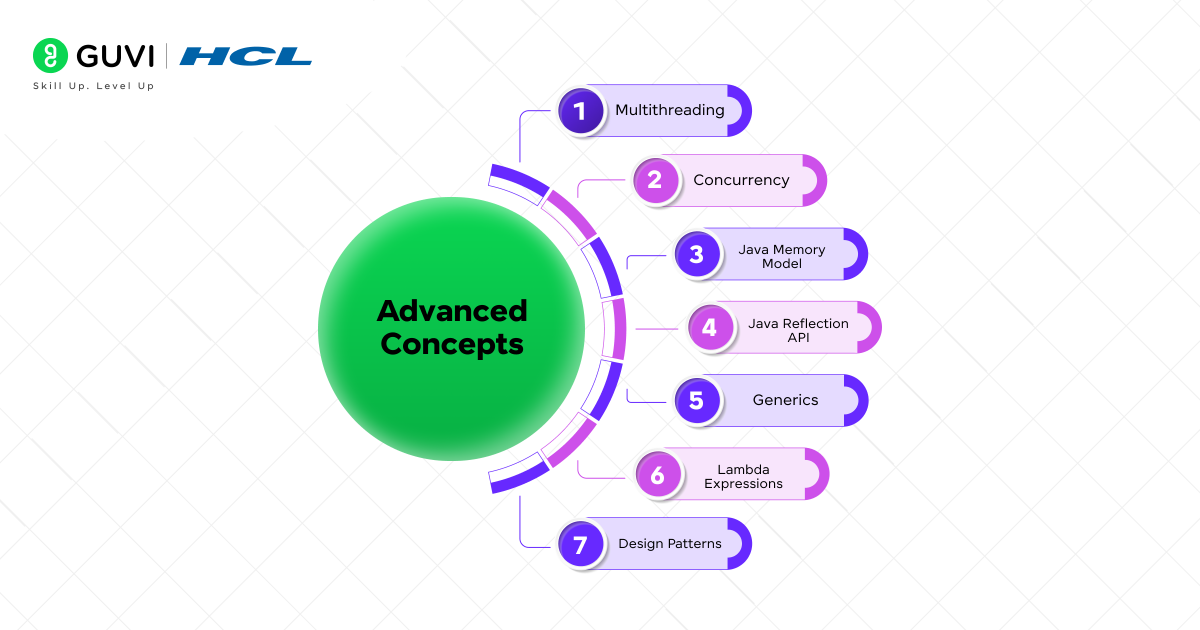
The next section is mastering advanced concepts in Java. Advanced concepts in Java are very popular in building a solid and structured back-end for a software. It includes multithreading, concurrency, Java Memory Model(JMM), Java Reflection API, Generics (wildcards, bounded types, generic methods and generic classes), lambda expressions and design patterns(Singleton, Factory and Observer).
Well, it may be exhausting reading these many concepts. These are optional except for multithreading and generics. Learning these advanced concepts will give a great advantage in interviews and in your work.
Database Implementation
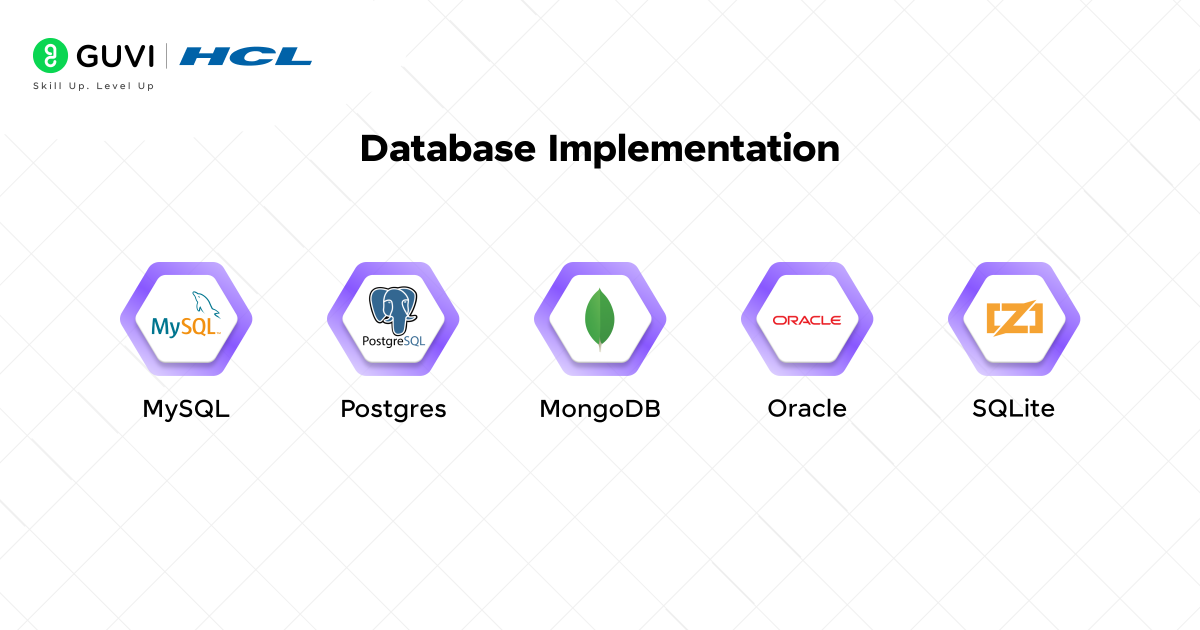
The next section is the database. Databases are very important for a software, creating and implementing databases are one of the developer’s responsibilities. Because it needs some technical expertise to implement it.
As a Java developer, you need to have a database implementation skill in Java. First, you need to understand the types of databases, such as MySQL, Postgres, MongoDB, Oracle, SQLite and their use cases. Each database will be used for each purpose, it needs some skill to pick the correct database for a specific use case and it is crucial to build those skills before implementing your database.
For implementing the database in Java, you need to learn how to interact with different database management systems (DBMS) through Java Database Connectivity(JDBC). JDBC is an essential API that allows Java applications to communicate with relational databases. You need to be familiar with CRUD(Create, Read, Update, Delete) and SQL querying.
Java Frameworks

The next section is Java Frameworks. Frameworks are structures, templates that developers can reuse and save time. It allows you to focus on writing business logic instead of boilerplate code. There are various frameworks for front-end, back-end and database development.
- Spring: Spring is a front-end framework for Java. It is the most popular Java framework for building enterprise-level applications. It offers various modules such as Spring Core (Dependency Injection), Spring Boot (microservices), and Spring Security (authentication and authorization).
- Spring Boot: Spring Boot is a back-end framework for Java. This builds on top of Spring and simplifies the development of RESTful web services and microservices. Its auto-configuration capabilities make it easy to get started with minimal setup.
- Hibernate: Hibernate is a framework for database implementation in Java. It is an Object-Relational Mapping (ORM) framework that allows Java developers to work with databases more intuitively. It abstracts SQL queries and handles database relationships seamlessly.
Restful APIs and Microservices
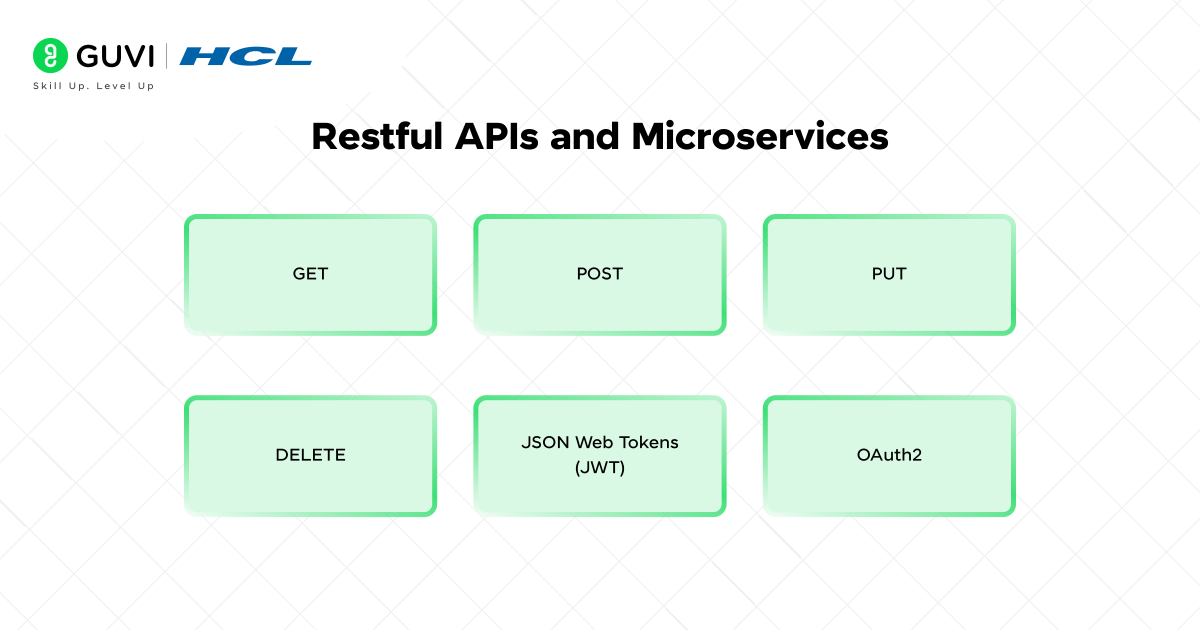
The next important skill for every Java backend developer is RESTful APIs and Microservices. Modern Java applications are built on RESTful APIs and microservices architectures to handle scalability and distributed workloads.
As a backend developer in Java, you need to master the core concepts in the Representational State Transfer (REST) API, are HTTPS methods like GET, POST, PUT and DELETE. One of the most popular Java frameworks for implementing this is using Spring Boot. Microservices architecture is most important in developing a service using smaller, independent services. Having this skill will take you to the peak of a back-end developer. Tools like Spring Cloud are used for service discovery and load balancing. The last skill is API security using JSON Web Tokens(JWT) and OAuth2. Securing the API is mandatory to avoid breaching, bypassing and misusing the data.
And that’s all you need to know for the development side. Remember that Java is not only used for developing software. It is also used for testing, DevOps and other areas of software development. Let’s discuss that in the upcoming sections.
Not sure, where to start? Don’t worry, I got you covered. Guvi’s DSA using Java Course that covers all the concepts from basic to advanced everything in a single course. It also provides industry recognized certifications, explanations in simple words and it is beginner friendly.
Testing
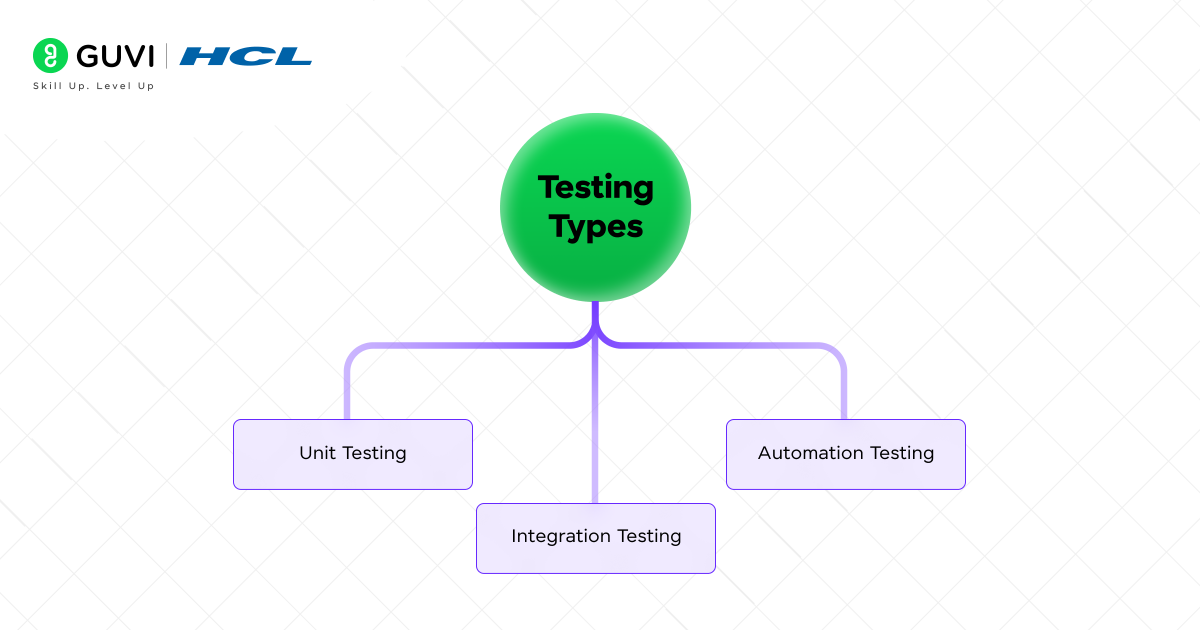
Testing is a critical part of the development lifecycle. Java provides a wide range of testing tools to ensure your applications are reliable and bug-free. Let’s see the types of testing and how Java libraries are used for those.
Testing Types:
- Unit Testing: Use JUnit and Mockito to write unit tests for individual components of your application.
- Integration Testing: Test how different parts of the application work together, often involving database or network interaction.
- Automation Testing: Use tools like Selenium for automating the testing of web applications.
Version Control and Automation
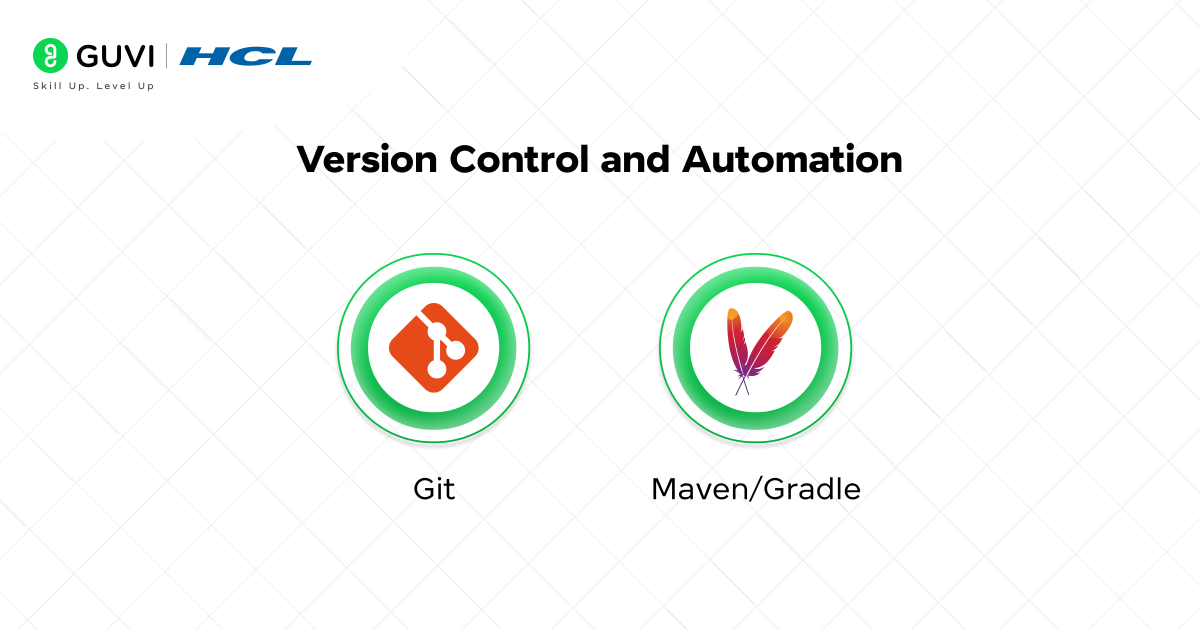
Version control is an integral part of software development. It aids in tracking and controlling modifications to the source code, thereby maintaining a historical record of code changes. Let’s see some of the tools used for version control and automations.
- Git: Among various version control systems available, Git has emerged as the industry standard. Version control for collaboration and source code management
- Maven/Gradle: tools automate builds, manage dependencies, and ensure that your project is portable and reproducible across different environments.
DevOps

Due to the advancement in technology, modern software development, Java developers are often expected to have an understanding of DevOps practices and Continuous Integration/ Continuous Development(CI/CD) pipelines for automating code integration and deployment. Let’s look into the tools used for this.
- Jenkins: A popular tool for setting up CI/CD pipelines. Jenkins automates building, testing, and deploying Java applications.
- Docker: Containerization allows developers to package applications with all their dependencies, ensuring that they run consistently across different environments.
- Kubernetes: Used for automating the deployment and scaling of containerized applications across clusters.
Hands-on Projects
The last section is about gaining experience by building projects. Based on the role you are opting for, you can focus on those projects. For example, if you want to become a front-end Java developer, you can put more focus on Spring and projects that have more advanced UI features. If you want to become a backend Java developer, building projects using the Spring Boot framework and projects like APIs, microservices will be the best option. Or else, you can simply build a complete application with all the features using Java.
Are you confused about which project you should build? No worries, as an initial step, look for the best full-stack projects to build. Try building clone projects of already existing projects in one of the areas, such as a social media site, an e-commerce website, and an online course website.
Conclusion
In conclusion, all you need to do is start from the basic concepts and move forward with the core and advanced concepts of Java. Once you lay a strong foundation in Java, start with frameworks, testing, automation and DevOps. This article covers everything you need to become an expert in Java development. If you have any questions or doubts, do let us know what you thought of it in the comments section below. Happy Learning!
FAQs
Yes, Java developers are still in high demand due to Java’s widespread use in web development, enterprise applications, and Android development.
Spring Framework is one of the most popular Java frameworks to learn for building robust and scalable applications.
There is no definitive language set to replace Java, but languages like Kotlin and Python are gaining popularity in certain areas.
Yes, Java developers are likely to remain in demand in 2030, especially in enterprise-level applications and large-scale systems.
A Java full stack developer is skilled in both frontend and backend development using Java, often working with databases, APIs, and web technologies.

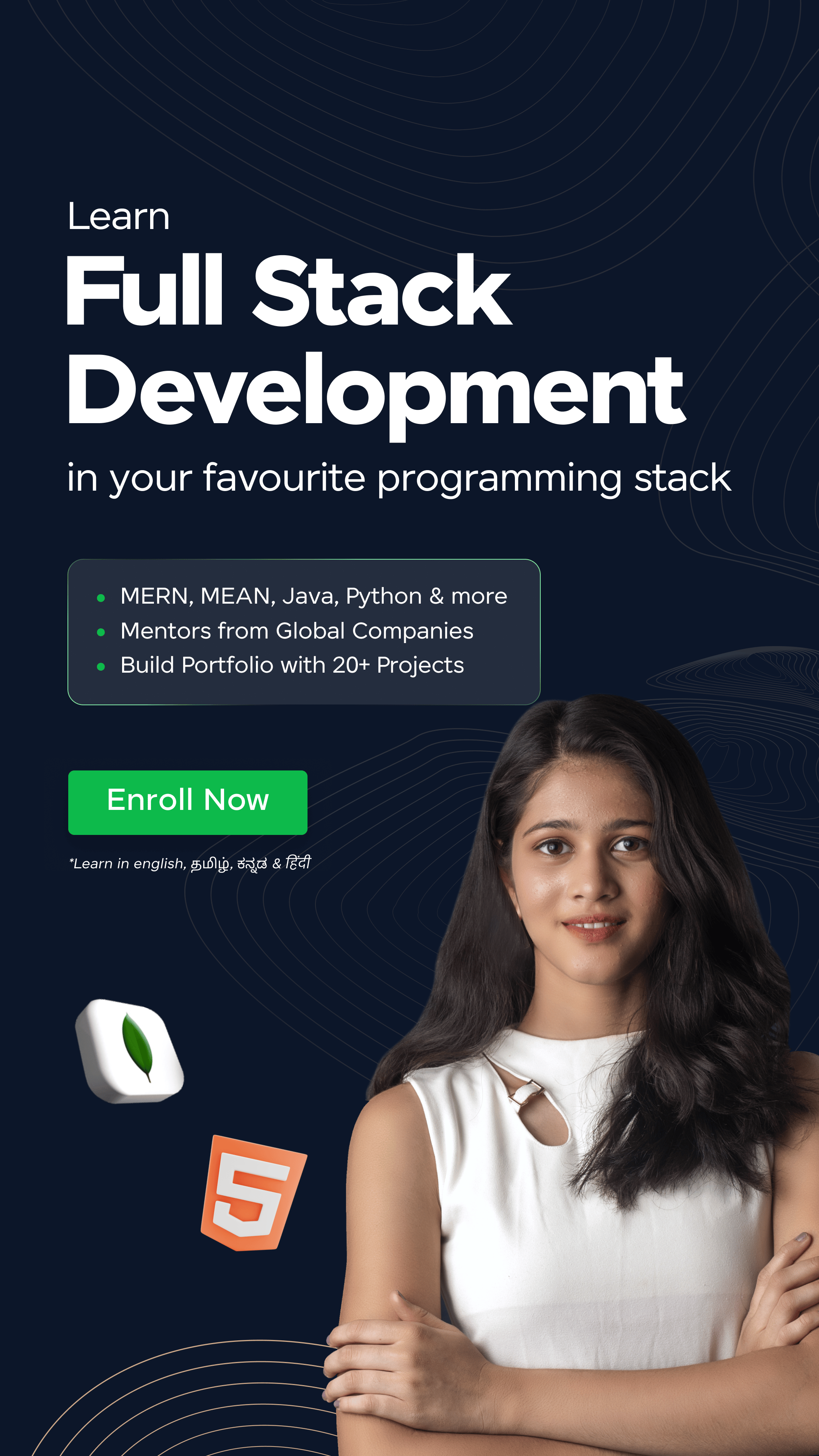
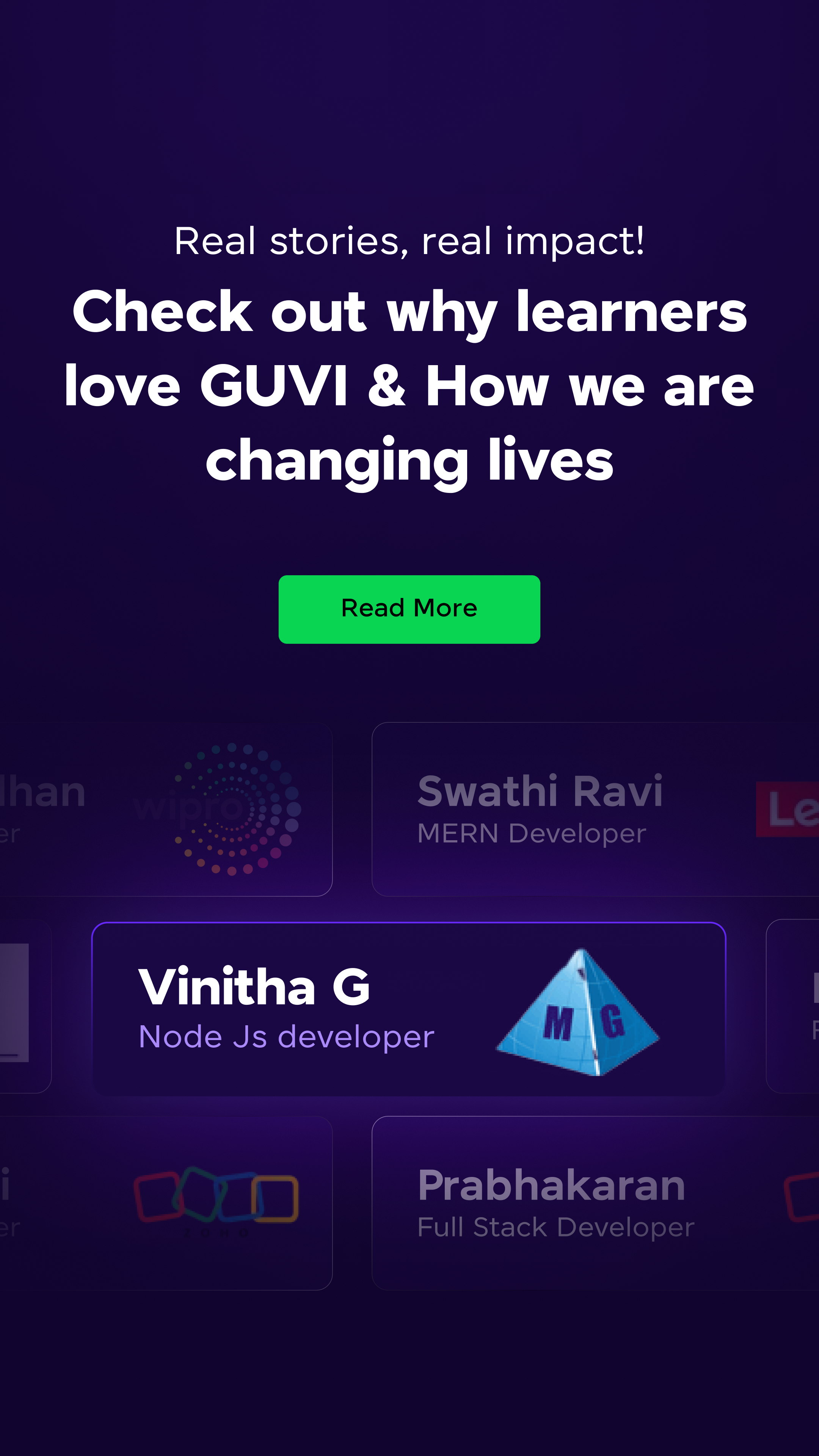






















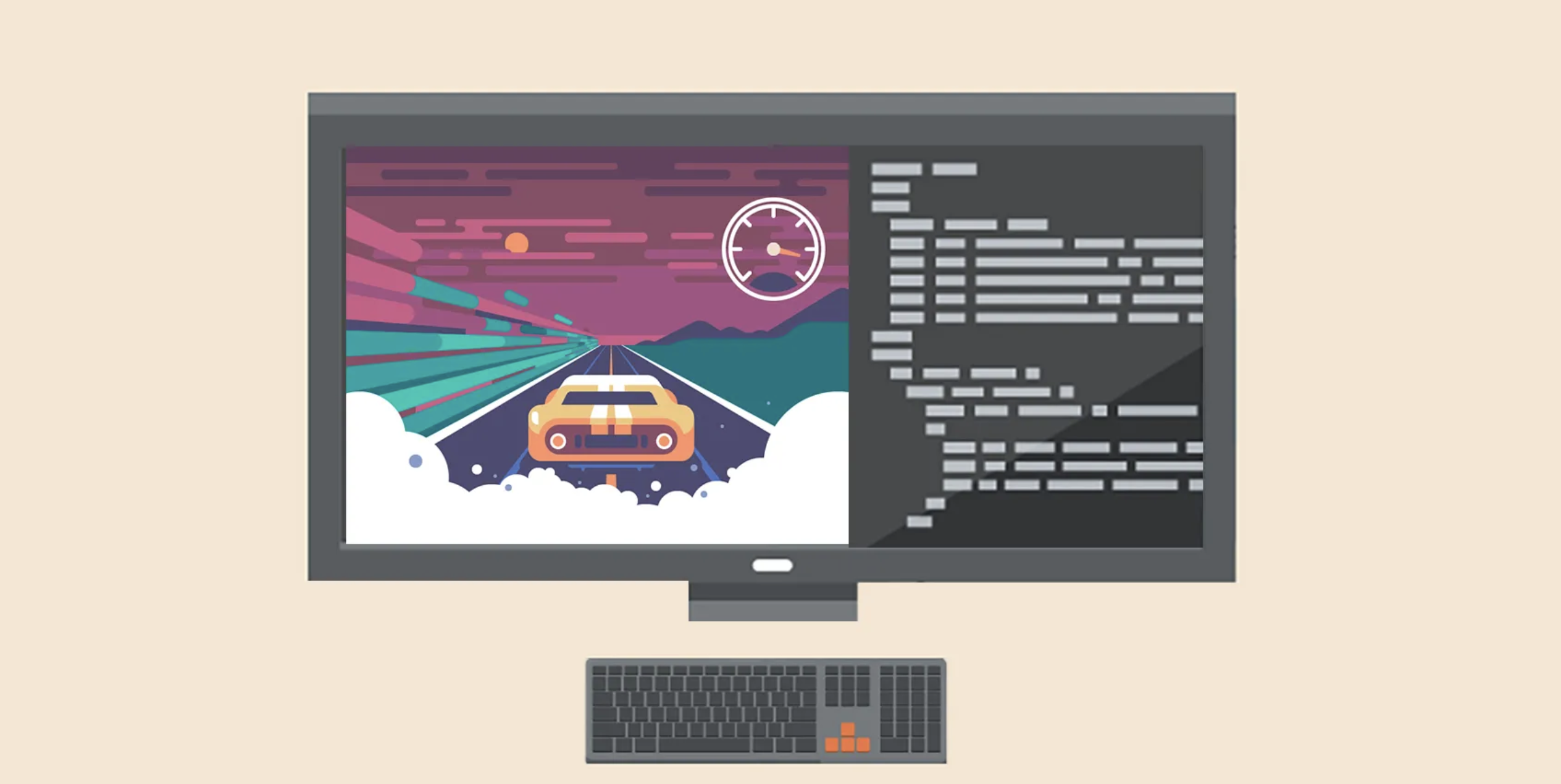
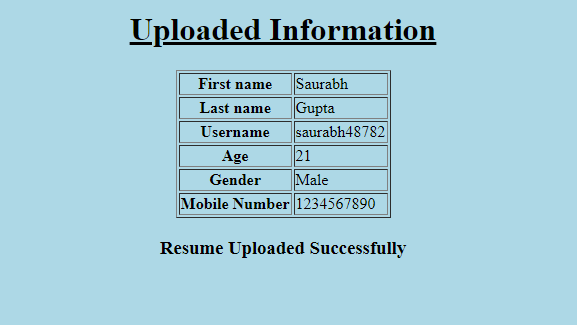
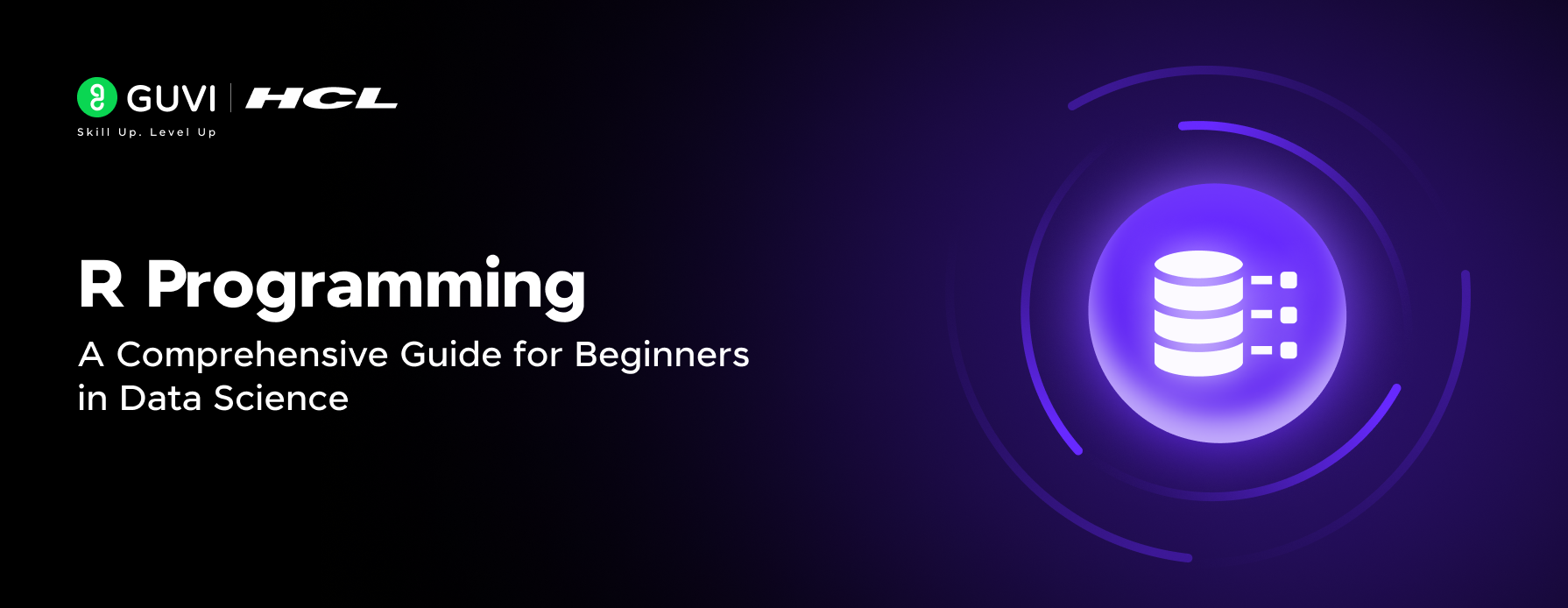

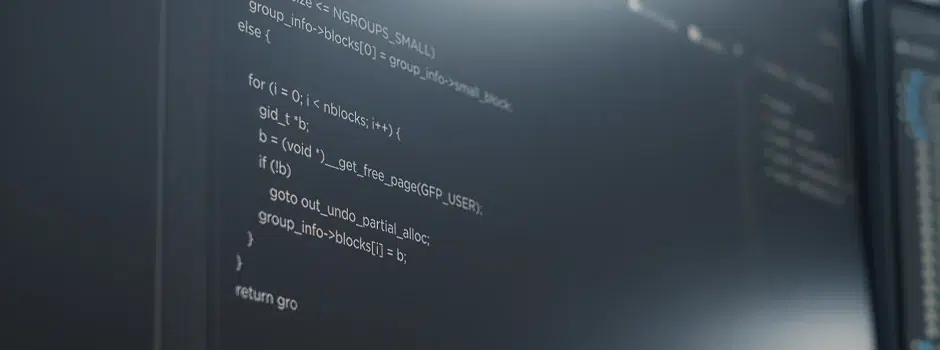

Did you enjoy this article?